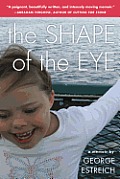 When George Estreich’s second daughter was born, the doctor commented on her almond-shaped eyes and wondered if she may have Down Syndrome. George and his wife didn’t think much of it because his mother is Japanese. But when tests confirmed the doctor’s diagnosis, the Estreich’s entered a world they had no preparation for, a world where they struggled to see their daughter as a “child first” instead of her medical and developmental challenges.
When George Estreich’s second daughter was born, the doctor commented on her almond-shaped eyes and wondered if she may have Down Syndrome. George and his wife didn’t think much of it because his mother is Japanese. But when tests confirmed the doctor’s diagnosis, the Estreich’s entered a world they had no preparation for, a world where they struggled to see their daughter as a “child first” instead of her medical and developmental challenges.
Estreich recounts his family’s journey while shedding light on the historical and current views of Down Syndrome and the people who have the extra chromosome that defines it in his memoir, The Shape of the Eye. As a stay-at-home dad, Estreich cares for his two daughters, Ellie and Laura. He is also a writer, a poet turned to prose to capture the challenges and the joys of parenting both his daughters, but particularly Laura, the youngest.
In his wholly engaging, honest depiction of life with a Down Syndrome child, Estreich connects with readers whether they have a personal connection to someone in their own lives with Down Syndrome or not. He talks about his difficult relationship with his mother, who moved to the U.S. from Japan after World War II, and how that intensified after Laura’s diagnosis. He discusses challenges on the playground, where he feared other children wouldn’t accept Laura because of her differences.
As the book unfolds, Estreich celebrates Laura’s milestones: learning to eat, learning to speak, integrating into school life. Along the way he begins to see her as the person she is, developmentally behind her sister for sure, yet expressing her distinct personality and finding her own place in the world. The Shape of the Eye is not just for those who may be dealing with similar circumstances, rather any parent can find commonality in Estreich’s story of learning to love and accept his child for who she is rather than what he expects her to be.
The publisher provided me with a copy of this book in exchange for my honest review.

